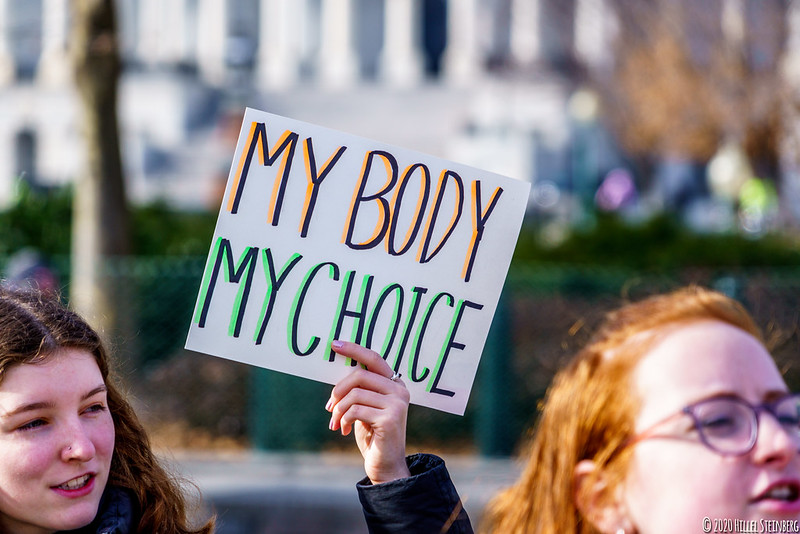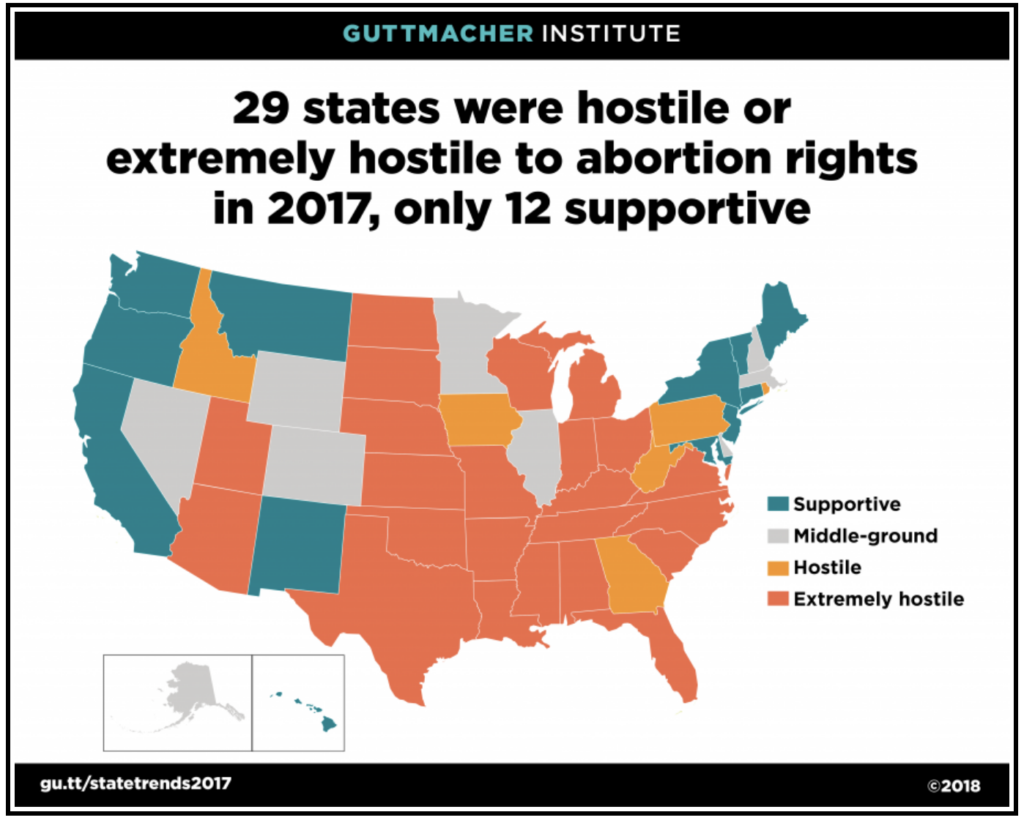
A recent study from Guttmacher Institute found that while almost 60 percent of women who may seek an abortion are located in U.S. states that are hostile to abortion rights, only 26 percent of abortion facilities fall within these states.
The study examined the 808 clinics in the United States that collectively provided 95 percent of abortions in 2017. Central to the study was a map the Guttmacher Institute had produced in 2017 classifying each state as “supportive,” “middle-ground,” “hostile” or “extremely hostile” to abortion rights. The map showed that only 12 states were supportive of abortion rights, while 29 states were either hostile or extremely hostile.
Three of the “extremely hostile” states—Kansas, South Dakota and Texas—have implemented restrictions that directly conflict with scientific evidence. Twenty-nine states have imposed at least two restrictions that lack scientific basis.

“The reason we will get stuck on a state-by-state level … is because in a lot of ways, Roe v. Wade is already not a reality for people in a number of these hostile states,” said Rachel Jones, author of the recently released study. “So access to abortion care is already really difficult in another state.”
Accordingly, the Guttmacher Institute found that about 46 percent of clinics in supportive states offered abortion care five or more days a week; in hostile states, that percentage dropped to 29 percent.
The disparity in treatment extends beyond providing abortions as well. “Our research demonstrates that many clinics providing abortions offer a range of health care services, including contraception and gynecological care,” wrote Elizabeth Witwer, a research associate at the Guttmacher Institute. “But clinics in states hostile to abortion rights are less likely to offer other reproductive health care services to their patients.”
The research found that 93 percent of clinics in states supportive to abortion rights provided family planning services or contraception, while 75 percent of clinics in hostile states did so.
Further, the study underscored the weight of the cost barrier that often stands in the way of receiving proper treatment. Witwer stated, “While the average cost of a first-trimester abortion has not increased greatly in recent years, at $550 it is still prohibitive—underscoring the need to repeal bans on insurance coverage for abortion like the Hyde Amendment.”
For the 75 percent of abortion patients who are low-income, and the many who have to pay out-of-pocket owing to a lack of insurance coverage, this high cost places abortion even further out of reach. Accordingly, a 2014 study in the American Journal of Public Health found that the top reason women delayed seeking abortion care was travel and procedure costs.
The Hyde Amendment, which Witwer cited, was implemented in 1977 to prevent Medicaid funds from being used to cover the cost of abortions for low-income American women. As a result, low-income women frequently struggle to put together required payments and experience delays in securing abortion care or are unable to obtain it altogether.
Taken as a whole, these findings reflect the heightened difficulties that women have faced in recent years while seeking safe and accessible abortions. While Roe v. Wade seemingly secured abortions rights across the United States in 1973, state lawmakers have since introduced a range of antagonistic policies encumbering women’s ability to access abortions. But how?
While Roe v. Wade indeed legalized abortion nationwide, subsequent Supreme Court decisions gave states the ability to regulate the procedure, so long as the restrictions don’t pose an “undue burden” on the pregnant person. Such measures include mandating admitting privileges for abortion clinics at local hospitals, setting unreasonable and unnecessary facility requirements, and forcing doctors to provide patients with scientifically inaccurate information with the intent of deterring an abortion. The Guttmacher Institute study takes a holistic view of these measures, revealing the number of different ways in which geography plays a role in a woman’s access to abortion care.
“One motivation for this study is acknowledging that having an abortion clinic in your community is not necessarily an indicator of access to care,” noted Jones. “If you can’t afford that abortion, if they’re not open on days that you can get to them because of childcare and employment … then that abortion care is not going to be accessible to you.”
You may also like:





